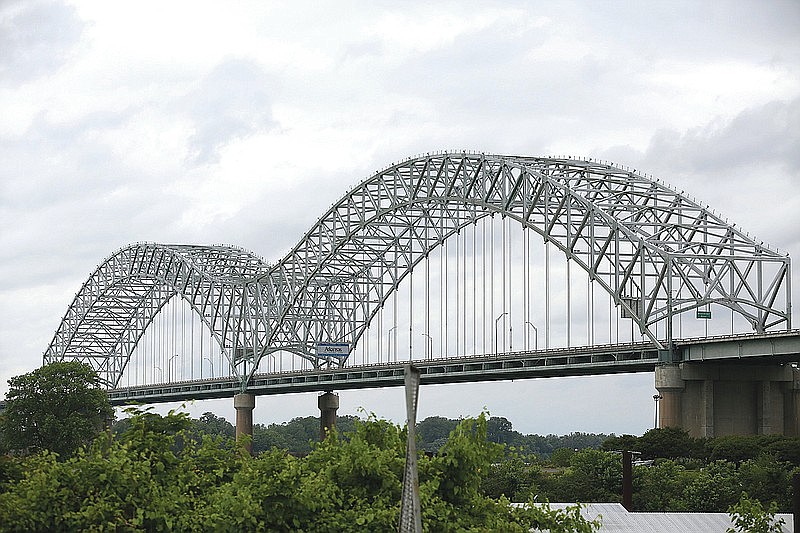The Hernando de Soto bridge over the Mississippi River into Memphis "may need some additional repairs" apart from the ongoing replacement of a cracked steel support beam, the Tennessee Department of Transportation said in a Friday news release.
Meanwhile, the last of eight permanent steel plates was installed where the crack was found on the Interstate 40 bridge during a routine inspection in May, the release states, and some "minor miscellaneous drilling" continues on "small connection pieces." The plates average 30 feet long, and the heaviest one is about 12,000 pounds.
The bridge connects Tennessee and Arkansas as a major commercial corridor, and it has been closed since May 11. Traffic has since been rerouted to the Interstate 55 bridge, 3 miles to the south.
Transportation officials have not provided a concrete timeline for repairing the I-40 bridge, but they have said it could take until the end of the month.
A draft report of field inspections conducted by the Tennessee Department of Transportation revealed no failures on the bridge but did find some places that needed more repairs, the release said.
"We have asked the contractor to proceed with sourcing the various materials we'll need for those repairs," the news release states. "No detailed schedule yet but our original end of July date is still the goal. The safety of the workers and the public is our number one priority."
The Tennessee department expected final bolting and torquing of the eight steel plates to be complete Friday night and de-tensioning of the tension rods to be complete today. Next week, workers will start removing both the tension rods and the rigging from the upper truss section of the bridge.
An Arkansas Department of Transportation spokesperson did not respond to a request for comment Friday.
The crack on the I-40 bridge, a tied-arch span, was found on a steel beam that connected chords to the arch. When the beam cracked, the load that was once carried by the beam shifted to other parts of the bridge.
The Tennessee Transportation Department oversees repairs of the I-40 bridge, while the Arkansas department is responsible for inspections. Kiewit Infrastructure Group of Omaha, Neb., was contracted for the repairs.
Work to repair the bridge has been going on 24 hours a day, seven days a week. The fractured section of the I-40 bridge's tie girder was removed June 21.
The high traffic volume and the way the bridge is designed means the Arkansas Department of Transportation classifies it as "fracture critical," meaning parts of the bridge are "subject to tension whose failure would probably cause a portion of or the entire bridge to collapse."
Fracture critical bridges require frequent inspections, but are not inherently unsafe.
The crack was discovered May 11, but a photo from 2019, confirmed by transportation officials to be authentic, shows the crack has been around for potentially years. Another photo, currently being reviewed by state and federal transportation officials, appears to show a crack as far back as 2016.
The discovery led the Arkansas Department of Transportation to fire the inspection team leader for missing the crack during previous inspections.
Traffic moved slowly over and near the I-55 bridge in the weeks after the I-40 bridge closed, but transportation officials in both Arkansas and Tennessee implemented traffic pattern changes and on- and off-ramp closures on both sides of the river in early June.
Since then, travel times in both directions have decreased significantly, according to real-time traffic data. As of a week ago, delays were as short as 15 minutes, compared with more than an hour in May.
